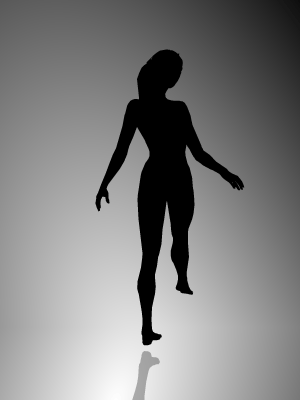
OPTICAL ILLUSION
An optical illusion (also called a visual illusion) is characterized by visually perceived images that differ from objective reality. The information gathered by the eye is processed in the brain to give a percept that does not tally with a physical measurement of the stimulus source. There are three main types: literal optical illusions that create images that are different from the objects that make them, physiological ones that are the effects on the eyes and brain of excessive stimulation of a specific type (brightness, tilt, color, movement), and cognitive illusions where the eye and brain make unconscious inferences.
Physiological illusions
A scintillating grid illusion. Shape, position, colour, and 3D contrast converge to produce the illusion of black dots at the intersections.
Physiological illusions, such as the afterimages following bright lights, or adapting stimuli of excessively longer alternating patterns (contingent perceptual aftereffect), are presumed to be the effects on the eyes or brain of excessive stimulation of a specific type - brightness, tilt, color, movement, etc. The theory is that stimuli have individual dedicated neural paths in the early stages of visual processing, and that repetitive stimulation of only one or a few channels causes a physiological imbalance that alters perception.
The Hermann grid illusion and Mach bands are two illusions that are best explained using a biological approach. Lateral inhibition, where in the receptive field of the retina light and dark receptors compete with one another to become active, has been used to explain why we see bands of increased brightness at the edge of a color difference when viewing Mach bands. Once a receptor is active it inhibits adjacent receptors. This inhibition creates contrast, highlighting edges. In the Hermann grid illusion the gray spots appear at the intersection because of the inhibitory response which occurs as a result of the increased dark surround.[1] Lateral inhibition has also been used to explain the Hermann grid illusion, but this has been disproved.
SCINTILLATING ILLUSIONS
A scintillating grid illusion. Shape, position, colour, and 3D contrast converge to produce the illusion of black dots at the intersections.
Physiological illusions, such as the afterimages following bright lights, or adapting stimuli of excessively longer alternating patterns (contingent perceptual aftereffect), are presumed to be the effects on the eyes or brain of excessive stimulation of a specific type - brightness, tilt, color, movement, etc. The theory is that stimuli have individual dedicated neural paths in the early stages of visual processing, and that repetitive stimulation of only one or a few channels causes a physiological imbalance that alters perception.
The Hermann grid illusion and Mach bands are two illusions that are best explained using a biological approach. Lateral inhibition, where in the receptive field of the retina light and dark receptors compete with one another to become active, has been used to explain why we see bands of increased brightness at the edge of a color difference when viewing Mach bands. Once a receptor is active it inhibits adjacent receptors. This inhibition creates contrast, highlighting edges. In the Hermann grid illusion the gray spots appear at the intersection because of the inhibitory response which occurs as a result of the increased dark surround.[1] Lateral inhibition has also been used to explain the Hermann grid illusion, but this has been disproved.
SCINTILLATING ILLUSIONS
A grid illusion is any kind of grid that deceives a person's vision. The two most common types of grid illusions are Hermann grid illusion and the Scintillating grid illusion.
SOME OPTICAL ILLUSIONS







No comments:
Post a Comment